Starved of holiday opportunities for the best part of two years and a greyhound superfan at heart, it seemed a good idea to take the ferry over and drive around the Emerald Isle trying to take in all the dog tracks the South has to offer in the space of fourteen days. Nine of the dogs we own were imported from the Republic this year so a meeting with existing and potential breeders also seemed prudent.
Naively, I expected to find exactly the same as on offer at the various tracks in the UK. I was very wrong.
The idea was to visit each track to coincide with a race meeting and the logistics of doing that are far from straightforward nevertheless the tour kicked off after a ferry and drive from Belfast with a visit to Kilkenny for the 8.12 race on a Wednesday morning. That, in itself, begs the question ‘who is betting on greyhounds at this ungodly hour?’ The answer I was informed is betting outlets in Eastern Europe for whom these SIS meetings are deliberately staged.

I soon discovered how easy it is to strike up conversations with wonderful dog people in Ireland from whom all sorts of information is forthcoming. Having made a book myself in the past I seemed to get on particularly well with the course bookies and this is how I learned that they are required to bet to 135% for these SIS-screened contests. That’s not quite as good as the 127% that the industry favours here in the UK but still a sensible market in which to have a bet without inside knowledge.
I tend to stick with one layer and John Mitchell (who doesn’t do Twitter) obliged me with a couple of winners to start the tour off on a profitable note. Kilkenny doesn’t have the best facilities Ireland has to offer but they were on a par with many UK tracks. Swindon comes to mind. What struck me immediately however was that the vast majority of participating hounds were owner trained. Glancing back at the racecard now, only one of every six would have an owner that wasn’t also the trainer and herein lies one of the biggest differences between the sport here and in Ireland. Sure, there are dogs on every card here where the trainer is also the owner but those are in a small minority.
The position was much more starkly brought home to me that evening when I journeyed South to the coast to take in a meeting at Youghal. I don’t think it is unreasonable to say that, of all the Irish tracks, Youghal has the least in terms of facilities. The bar has closed, temporary stairs have been erected to access the stand because of safety concerns about the originals and refreshments were limited to one man with a coffee machine. What was most remarkable was that I was almost certainly the only person there who hadn’t arrived with a dog. I booked online in advance having taken note of warnings about limited numbers being admitted but I needn’t have bothered – they knew my name before I was able to give it and looked at me as if I was a celebrity or a weirdo (clearly the latter).
In stark contrast to the UK where a contracted trainer may have a dozen dogs running at a single meeting, the car park was full of vans and cars from which a man would emerge with one or two dogs but rarely more. Many of these men were of pensionable age with their pride and joy at the end of a lead. No attached trainers here, there must have been at least forty such vehicles supplying the runners for the thirteen races. Each had to pay an entry fee to race – usually 10 Euro per dog but sometimes more. Yes, the win prize money tends to be higher in Ireland but this fee to race has to be taken into account. There was a bookmaker in attendance but nothing like what was on offer that morning. The percentage on the board was enormous, in the region of 200% and interest in having a bet was almost non-existent. All these men were here just to watch their dogs. This set the tone for what was to come. The track itself was immaculate.
Ian Fortune suggested I have a word with the course commentator, Barry Drake and we had a long and informative chat. It turns out there is very little interest in betting in graded races unless the owner/trainer with inside information wants to lump on. These meetings aren’t televised and there is no safety net of a betting exchange covering them. The bookmakers can only take ‘hot’ money hence the state of the market. There is also a shortage of graded runners in Ireland. So many are being sold to the UK because of the present buoyant market and higher prices that there are barely enough to go round. This, no doubt, flows from the recent year on year reduction in breeding numbers which trend must certainly now reverse because of market forces alone. We talked about the number of older men for whom greyhounds were their life and I agreed to meet him again when the tour arrived in Cork. His commentary on the races was informative and top notch, something I also found everywhere I went.
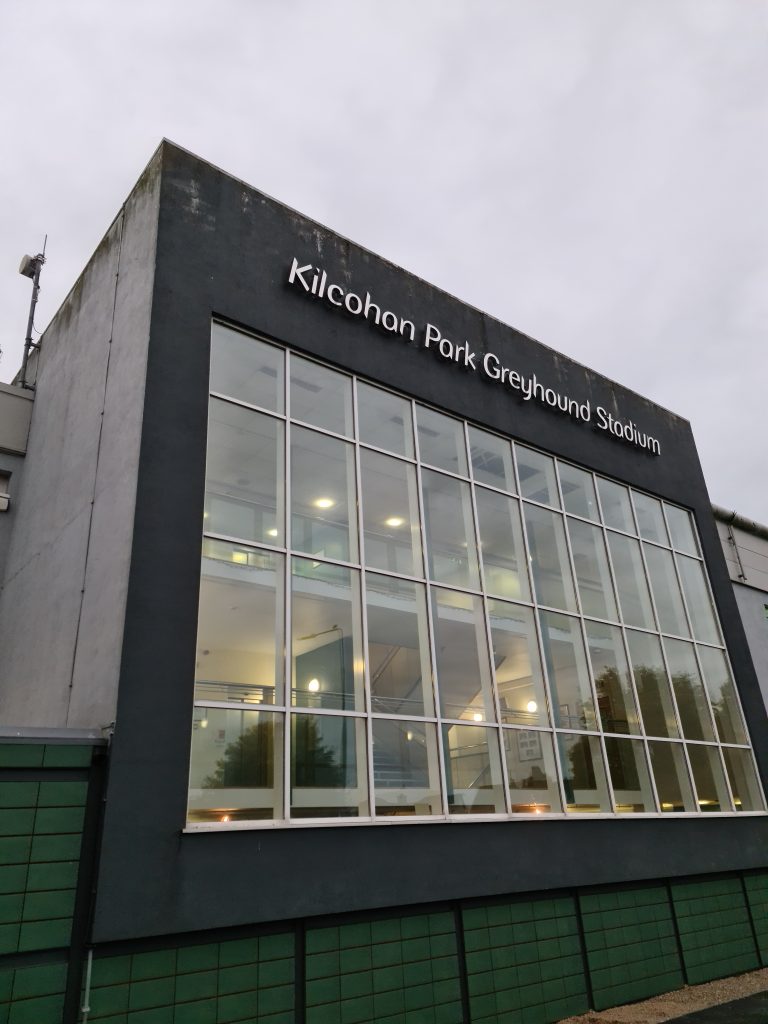
The following morning was another 8.12 start, this time at Kilcohan Park Waterford and I bagged some more winners courtesy of the 135% on the boards. Waterford is a decent sized city and the impressive modern stadium reflected this with a capacity for thousands albeit the attendance was again myself and the many owner/trainers. By this stage I noticed that the racecards followed a standard format with a glossy green Rasaiocht con Eireann cover and an identical font. Signage around the stadium was also standardised as is the fast food menu when it is available in the evenings. There is no doubt that the Irish greyhound authorities are pursuing an agenda of standardisation. The racing was typical of a BAGS card or graded roulette as some derogatorily call it. I have to say I’m not a favourite backer so personally I like that kind of racing where the jolly’s not too short – you can have a guess and be properly rewarded when you get it right. I watched with interest the automatic irrigation system that operates in addition to a water bowser when needed. I had to set off promptly for another double header at Enniscorthy.
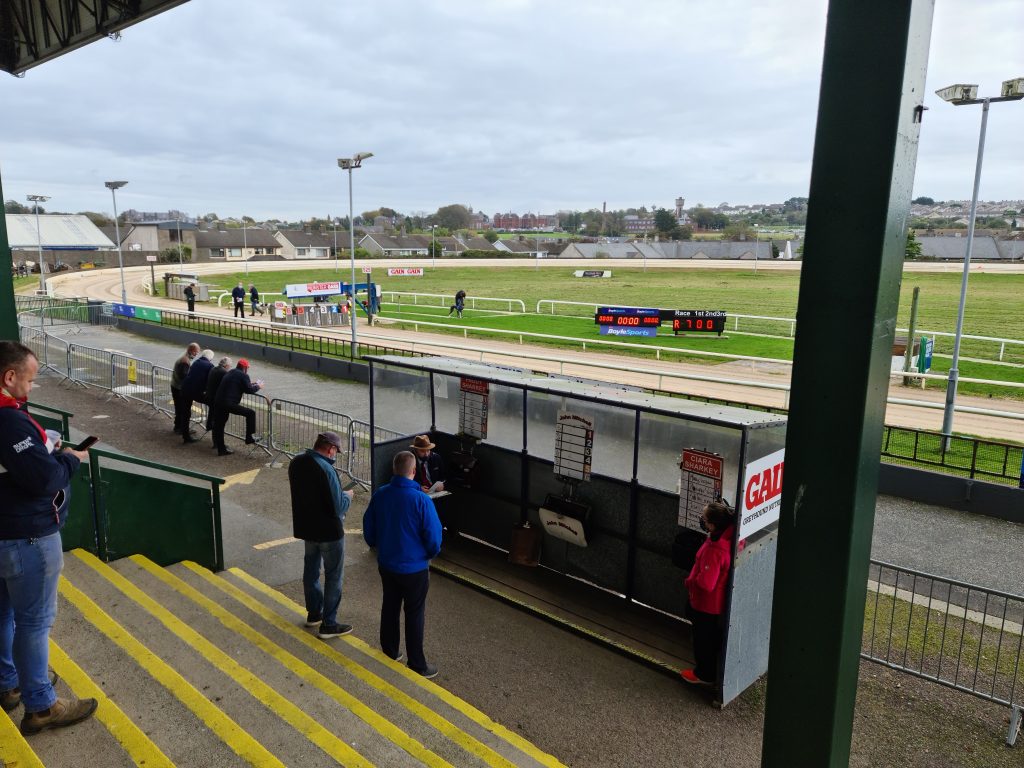

Admission to the SIS meetings was free as it is to BAGS meetings here. To all others the admission was a standardised 10 Euros. Enniscorthy in County Wexford is a modest-sized town and the racetrack was just a short walk to the South West so I could leave the car and have a pint or two. The facilities were better than I had feared with an elevated grandstand on legs embracing a restaurant, bar and decent viewing. The paddock area was interesting as everything was in full view for the customers; something that was replicated at most tracks. There are racecard numbered kennels so you could see the kennel for trap one in the first right through to trap 6 in the last and you could see and hear which were the good and poor kennellers. The racing was competitive but having a bet was out of the question without inside information given the figures on the boards. There was a decent crowd in attendance in addition to the dog men and many of the locals did have a bet either blissfully unaware of the bad value on offer or not caring about it.

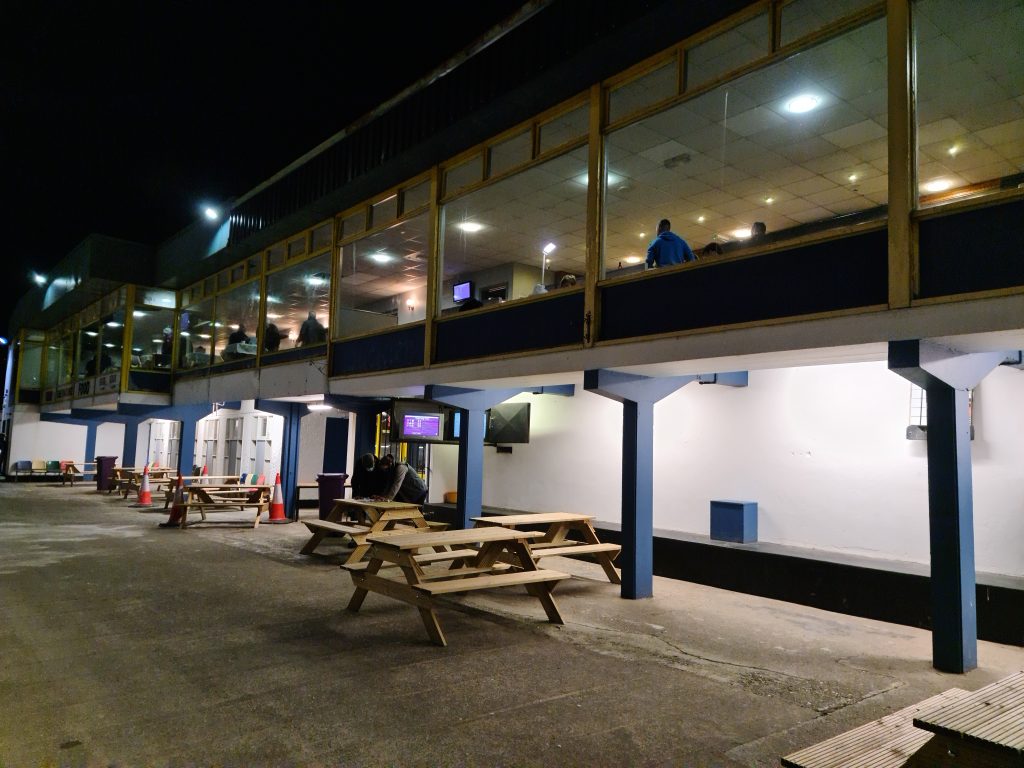
Next stop was Clonmel in County Tipperary featuring five heats of an ON2/ON3 competition for newcomers. The effect of this was that there was very little relevant form on the card (or indeed much form at all) and this was again reflected in the betting. There was a bookmakers’ area outside but it was unused and just one layer stood in the corner of the bar offering over 200% a race. Like every other track, Clonmel uses the same make of fully automatic traps controlled from the officials’ boxes in the stand. They swing on, close and lower without manual assistance and retract in a similar way. I haven’t seen these in the UK, the absence of a human on track in case anything goes wrong makes me nervous, but nothing did go wrong at any stage. All tracks without exception also had a very competent race commentary and a timing and results board with LED displays which gave the information immediately after each race allowing the commentator to include it in his conclusion. There cannot be any good reason why this shouldn’t happen universally in the UK. There was a very decent attendance and I was surprised just how many locals would have an evening at the dogs without having a bet – the tote pools were very modest too. It was almost as if being there was enough!

Saturday evening came and I was excited that my next stop was Curraheen Park in Cork which coincided with the semi-finals of the Laurels and some well-known hounds were involved. I met up with Barry Drake again and there was a general buzz about the place even though the attendance was very modest for the weekend and given the importance of the racing. The facilities are so impressive including a large multi-million Euro glass-fronted stand that would put most in the UK to shame and do justice to a much greater attendance. I was so disappointed that there were no supporting opens and, the semi-finals aside, the betting on the graded races was of the 200% variety with little consequent interest from the public. I wasn’t there the following weekend for the final of the competition but it was widely reported that the attendance was also very modest despite some high-quality racing. Maybe, as was suggested to me, this was a local issue?

Next stop was Kingdom Greyhound Stadium in Tralee and another standardised green racecard. This was an SIS-covered meeting with the SP reporter assisting the bookmakers, via IPad, to bet to the correct 135%. Life seems so much better for a few decent priced winners (courtesy of @betbrowne2015), good food and a bar. Once again, the track was superb and the Tote offered the standard ‘Pick Six’ but also a final race ‘Bet or Bust’ with its own pool which rolls over when no one manages to pick the six finishers in the correct order. This was another standardised feature that cropped up regularly if not universally. The operation of the tote was very similar to the UK.
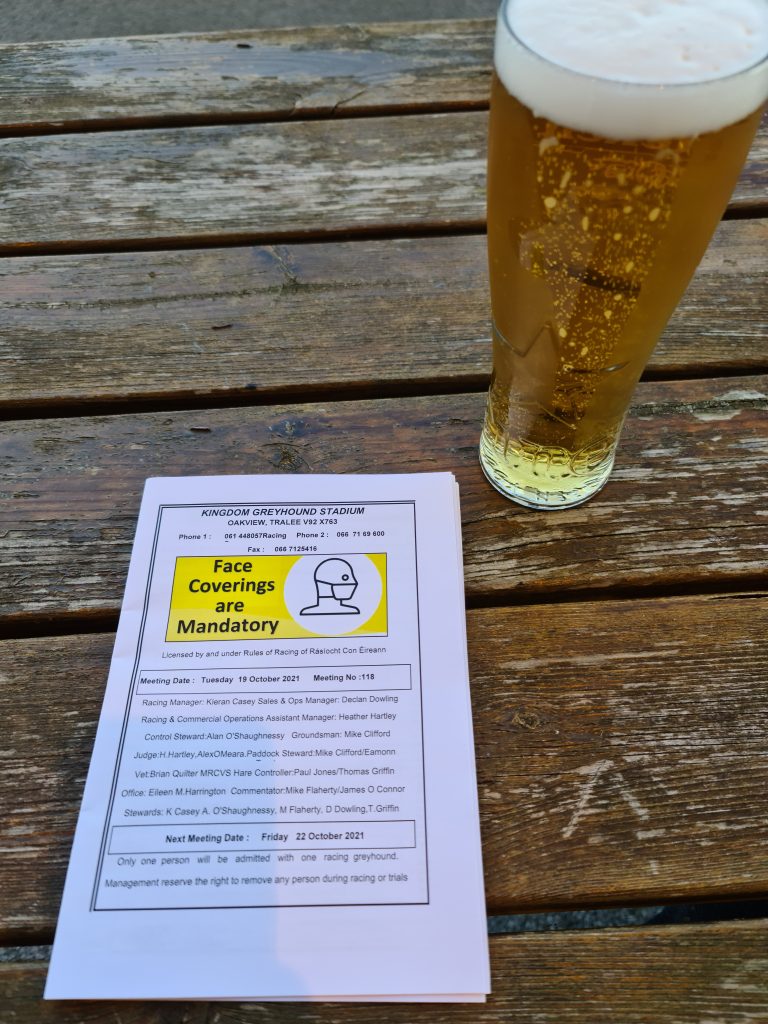
Limerick was the next in line with facilities the like of which I have never seen at a greyhound track. Parking for many hundreds of cars, a coach park and a grandstand of such size and quality you would only expect it at the best of horseracing venues. The warm hand of Irish hospitality was held out to me by local SP reporter and lifelong family dog man, Paul Maher who gave me the guided tour including a good chat with the groundstaff and an offer of an even more in-depth visit the following morning before trials if I wanted. As an SIS meeting the percentage was a reasonable 135 again so betting was back on the agenda. My abiding memory however will not be the welcoming and knowledgeable people I met but the really sparse attendance (almost certainly under a hundred in total) made so obvious by the size and emptiness of such a wonderful venue.

Friday night had come around again and I was looking forward to the major city craic at Galway. The second biggest tourist destination after Dublin, I was expecting a super stadium and crowd to match. The traffic in Galway was horrendous. Kaan Hughes of RPGTV remarked to me that in Ireland, unlike the UK, you can plan your route to get somewhere and arrive on time because the rural traffic is so modest. That turned out to be very true, outside of the big cities at least. I arranged a B&B just yards from the track so I could leave the car and walk.

The facilities were pretty much as expected, a large, good-looking but under-populated grandstand and Heineken at the standard 5 Euro a pint but we weren’t on SIS so the betting was again to over 200%. I had several chats with the characterful bookies about this and they bemoaned not being able to win even at these figures. There was so little money in the ring it couldn’t make up for any gamble by informed and connected sources and so it proved. The occasional tourist or drunken local had a small bet from time to time then connections wanted 300 Euro on a dog at 6/4. It was a very lucky winner but it won nonetheless and so the night was a losing one for the books despite the figures.

Saturday saw a drive back to Thurles and a meeting with my breeder, Chris where I picked out a lovely blue and white bitch who’s just under twelve months old and who will now go off for schooling. It was great to see his facilities in rural Tipperary. The dog meeting was one of very few washouts on tour. It was raining heavily, there were problems with the hare, the meeting was delayed, the odds on offer were dreadful and the racing uninspiring. Interestingly, the racecard also contained the form for that evening’s meeting at Shelbourne Park and there seemed to be more interest in the racing there than at Thurles. One of the bookies priced up the Shelbourne races but at discounted odds to those on offer elsewhere. The bar area was busy but largely with the connections of the runners.
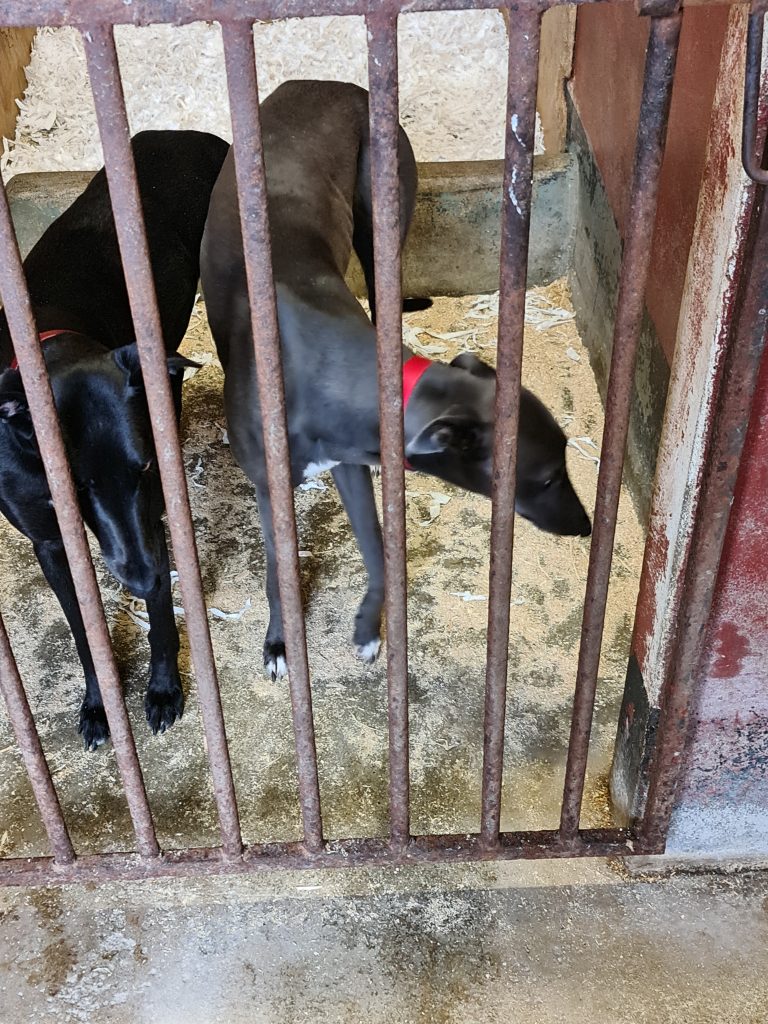
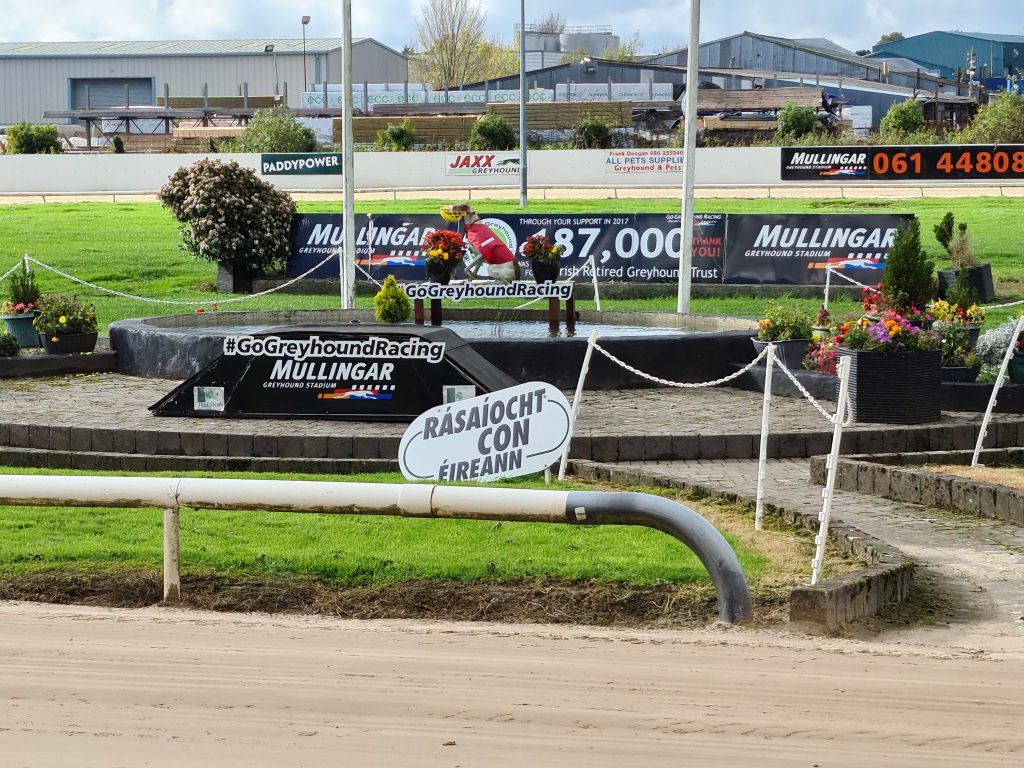
Mullingar hold a meeting that features on RPGTV on a Sunday afternoon. I always wondered why but I soon found out. I got there early in anticipation of some good SIS roulette racing only to find there were hundreds of people there already. The management had realised that they could offer Sunday lunch in the restaurant upstairs in addition to the usual greyhound fare downstairs and this led to a weekly bumper attendance. Good for them – a winning formula and a decent payday from SIS too no doubt. It was also good for me. I picked out a young bookie; Sam Rickard, following in his father’s footsteps and had all my bets with him. There was some action in the ring but not that much to be fair. I had a look at the exchanges and there wasn’t much liquidity to fall back on even though the meeting was televised. I backed five winners – sorry Sam – and I think he had a losing afternoon. For me however this was one of the better fixtures, not least because I could have a bet and the track had stumbled onto a winning formula.
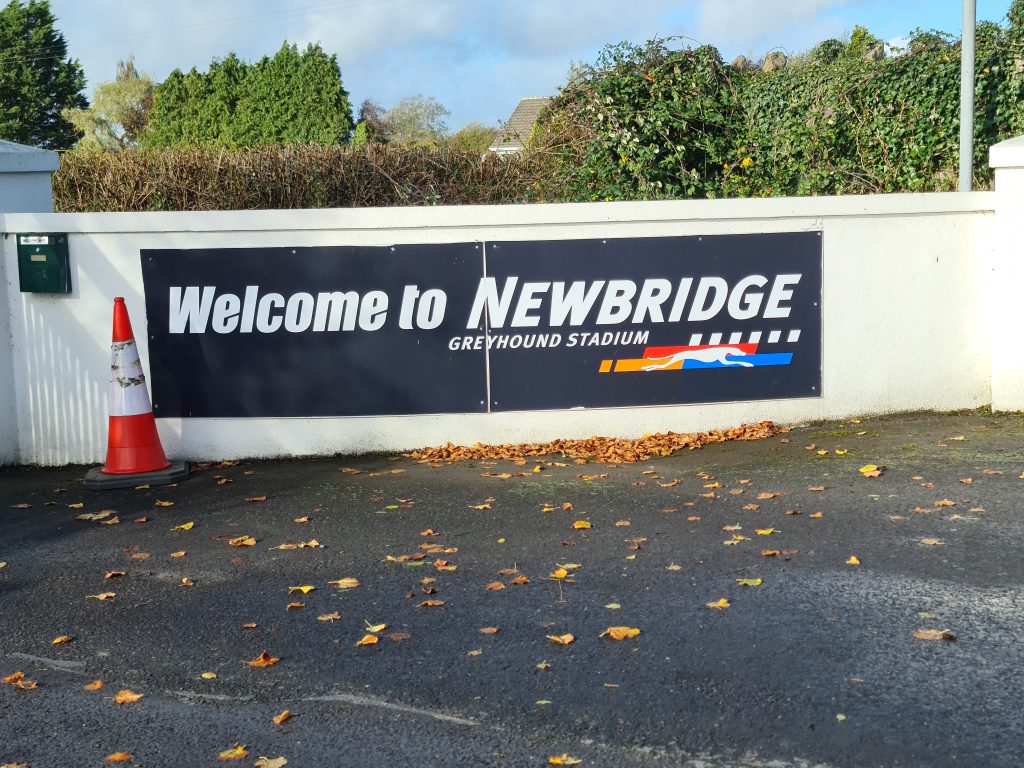
That left just Shelbourne Park on my final Tuesday night. I apologise to Newbridge and to Dundalk. I just couldn’t arrange to be there when a meeting was on. I visited both on my travels, had a good look round and took photos but didn’t have the benefit of patronising the facilities or a chat with the locals.
I had arranged to meet Ian Fortune at Shelbourne, we had a long conversation at and he brought legendary bookmaker Pat Hegarty in on it. This was a graded only card of eight races and so Pat was the only bookie in attendance. I was dismayed to see him bet to over 200% but it was soon clear why. I think I saw him lay two or three bets all evening. The crowd of about sixty comprised largely foreign tourists who were fascinated by the action but rarely ventured beyond a couple of Euro on the Tote. There was simply no money in the ring. On the big open race nights there can be eleven bookmakers in attendance. What a contrast!

I joined Ian in the commentary box and watched a consummate professional at work. In my ignorance I had expected Shelbourne to be head and shoulders above the rest but it simply wasn’t the case on a graded Tuesday. There’s no doubt the craic can be outstanding on big nights but for this mundane evening it wasn’t and there’s no doubt that the facilities aren’t on a par with the likes of Limerick. Looking at the card there were probably on average four dogs in each race that weren’t owner trained which was much higher than anywhere else but as Ted put it to me, there can be up to 600 dogs go around Shelbourne in a week, too many to keep record or track of and so it’s very difficult for punter and bookmaker alike. I promised to visit again for the Irish Derby when Shelbourne Park will, no doubt, be completely transformed.
I was surprised by much of what I encountered on my journey through greyhound racing Ireland. I had expected something akin to the racing in the UK but that wasn’t the case at all. There is clearly a dearth of punters in the Republic, just as here, but there is a sturdy base of grass roots dog men that props up the sport and forms a solid foundation. No wonder that so many of the dogs that race in the UK are bred in Ireland because that is the nature of the rural economy. Nowhere here do men arrive at the track of an evening with their own hound(s) without any real hope or expectation of a bet just for the craic of the race itself. These non-SIS races remind me so much of the British flapping scene of years ago but without the negative connotations. Every Irish track I visited had state of the art running surfaces, traps, watering, veterinary support yet, by and large, you couldn’t bet on the racing. Those who moan about BAGS roulette and the SPs in the UK don’t appear to realise that they are actually very fortunate here with what is on offer to gamble on.
What didn’t surprise or disappoint me was the exceptionally warm welcome I received and the knowledgeability of everyone involved in the sport. The racing is fundamentally the same but the attitude towards it is really quite different. We can and must embrace that difference and learn from it.
As published in the Greyhound Star on 3.11.21